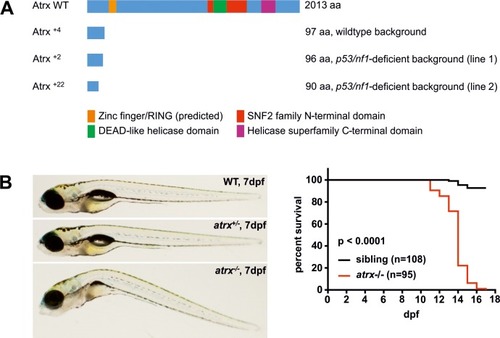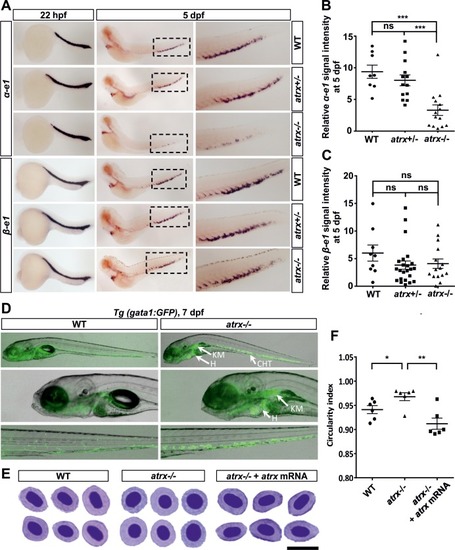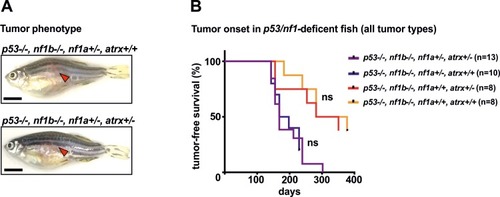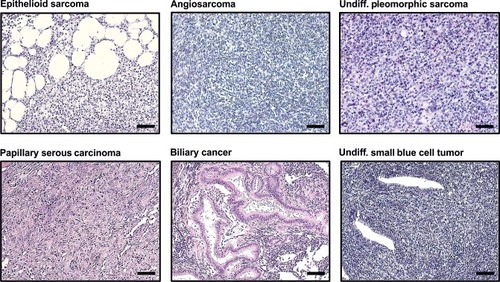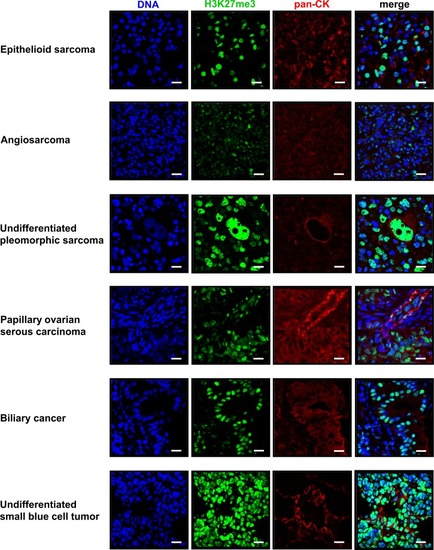- Title
-
Loss of atrx cooperates with p53-deficiency to promote the development of sarcomas and other malignancies
- Authors
- Oppel, F., Tao, T., Shi, H., Ross, K.N., Zimmerman, M.W., He, S., Tong, G., Aster, J.C., Look, A.T.
- Source
- Full text @ PLoS Genet.
|
PHENOTYPE:
|
|
EXPRESSION / LABELING:
|
|
|
|
This figure shows HE-stained sections of all tumor types detected in PHENOTYPE:
|
|
This figure shows all tumor types detected in |
|
|

